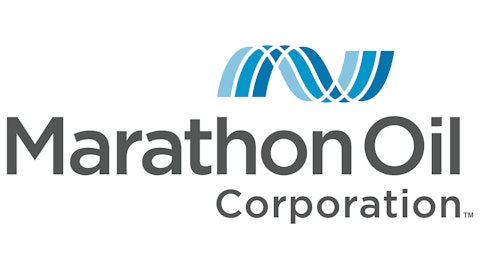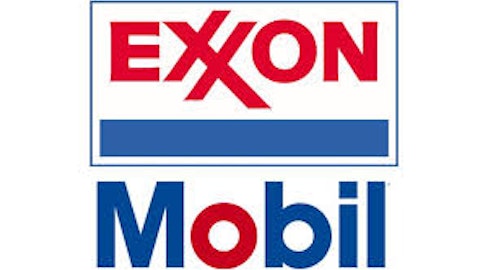On this day in economic and financial history…
Show us your papers
The first paper industry in the world was born in the imperial Han court of China on March 11, 105. More than 1,900 years ago today, court eunuch Ts’ai Lun first presented his invention to the Han emperor. The emperor, impressed by the useful new writing surface, rewarded his servant by promoting him to a position of substantial wealth.

Steel and oil, together at last
U.S. Steel expanded beyond its core steelmaking operations for the first time on March 11, 1982, when it finalized a merger with Marathon Oil Corporation (NYSE:MRO) . The merger, which resulted from a heated battle with Mobil Oil for control of the Ohio-based mid-tier oil company, was — at a cost of $6.2 billion — the second-largest takeover in American corporate history at that time. Marathon Oil Corporation (NYSE:MRO) executives had pushed back against Mobil’s efforts for fear of antitrust problems, while many employees feared mass layoffs once the larger oil company had gained access to Marathon Oil Corporation (NYSE:MRO)’s deep oil reserves. Marathon Oil Corporation (NYSE:MRO) and U.S. Steel executives waged a fierce battle against Marathon Oil Corporation (NYSE:MRO)’s own shareholders in the days leading up to the merger’s acceptance, as a group of dissidents said the company’s true value was closer to $18 billion. However, U.S. Steel’s white-knight offer was the only one to clear regulatory hurdles and provide a value that major institutional shareholders would accept.
The merger continued a trend of Dow Jones Industrial Average (Dow Jones Indices:.DJI) components merging with oil companies, which began the year prior with E I Du Pont De Nemours And Co (NYSE:DD)‘s record-breaking $7.8 billion acquisition of Conoco. Two years later, (Chevron Corporation) (NYSE:CVX) took shape from the merger of Standard Oil of California and Gulf Oil, at a price nearly double that of the record DuPont-Conoco tie-up of 1981.
However, both of the earlier mergers were eventually undone. DuPont divested itself of Conoco in 1998, spinning the business off in what was then the largest IPO in history. U.S. Steel, which became USX in 1986 and left the Dow in 1991, split into steel and nonsteel operations in 2001. The energy-focused half of USX became Marathon Oil again in 2002. Three decades after the merger, the fortunes of U.S. Steel and Marathon had diverged considerably. The former, once the world’s dominant steelmaker, was worth less than $4 billion. Marathon, at a $23.5 billion market cap, was approximately six times U.S. Steel’s size.
Going once, going twice…
Sotheby’s was founded in London on March 11, 1744. That day, Samuel Baker auctioned hundreds of rare books for several hundred pounds in total — roughly equivalent to $1.2 million in wage earnings, or $100,000 in purchasing power, today. Inflation can really add up over time. Sotheby’s was not the world’s first auction house, but it is the oldest English auction house, and is also the world’s largest (or second-largest, depending on the year and the available artworks) art auctioneer, with $4.5 billion in auction sales for 2012.
The company has set numerous records for valuable art auctions, which include the $95 million sale of Picasso’s Dora Maar au Chat, the $57 million sale of an ancient Mesopotamian sculpture, a $21 million sale of a 700-year-old copy of the Magna Carta, and the $120 million sale of Munch’s The Scream in 2012. Sotheby’s also happens to hold a business record in its own right, as it became the oldest publicly traded company on the New York Stock Exchange when it went public there in 1988.
Who says Americans don’t like efficient cars?
Toyota Motor Corporation (ADR) (NYSE:TM) sold its 1 millionth hybrid vehicle in the United States on March 11, 2009. Toyota, which had unveiled the Prius in Japan in 1997 and in the U.S. in 2000, became the world’s largest automaker shortly before announcing its hybrid milestone. These two back-to-back announcements vindicated the company’s risky strategy to begin promoting a small, energy-efficient hybrid car in the U.S. at a time when gas barely cost more than a dollar per gallon. Toyota had by this time sold more than 1.2 million Priuses around the world, and more than half had been sold in the U.S. The forward-thinking automaker had also developed hybrid versions of its Lexus RX and Highlander SUVs by 2005, and it began producing a hybrid Camry in 2006.
Toyota has continued to take the lead on hybrid sales, both in the U.S. and around the world. More than two-thirds of the approximately 2.5 million hybrids sold in the U.S. between 2000 and 2012 were Toyota models. Toyota also noted in 2012 that it had sold more than 4 million hybrids worldwide since the Prius’ 1997 launch, of which 1.5 million were sold in the U.S. That year, 15% of the automaker’s global vehicle sales were hybrids — a large enough total to generate a million hybrid sales for the calendar year.
The article 3 Major Milestones and 1 Merger Mistake originally appeared on Fool.com and is written by Alex Planes.
Fool contributor Alex Planes has no position in any stocks mentioned. The Motley Fool recommends Chevron and Sotheby’s.
Copyright © 1995 – 2013 The Motley Fool, LLC. All rights reserved. The Motley Fool has a disclosure policy.





